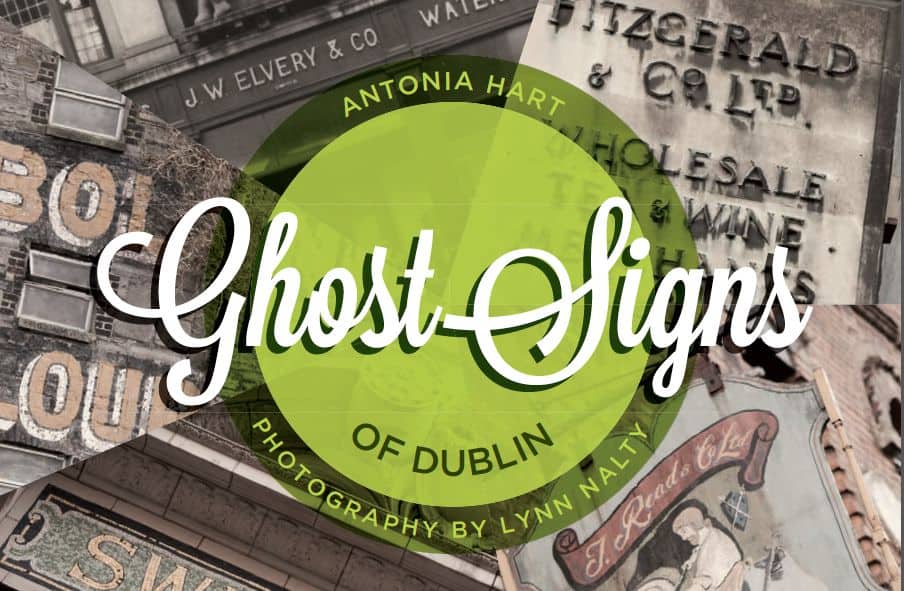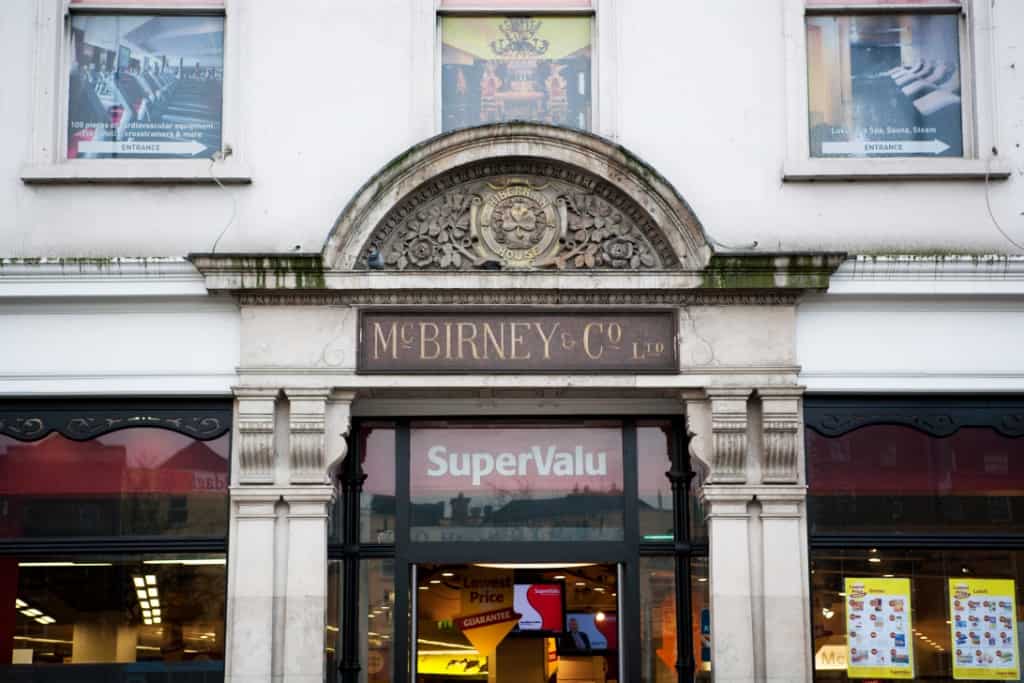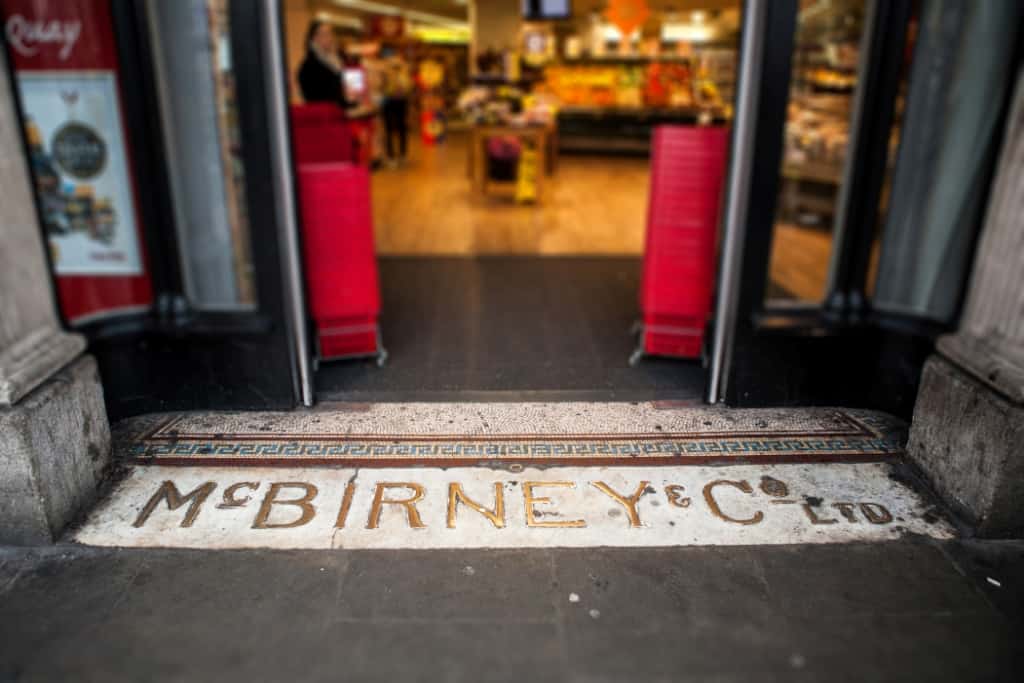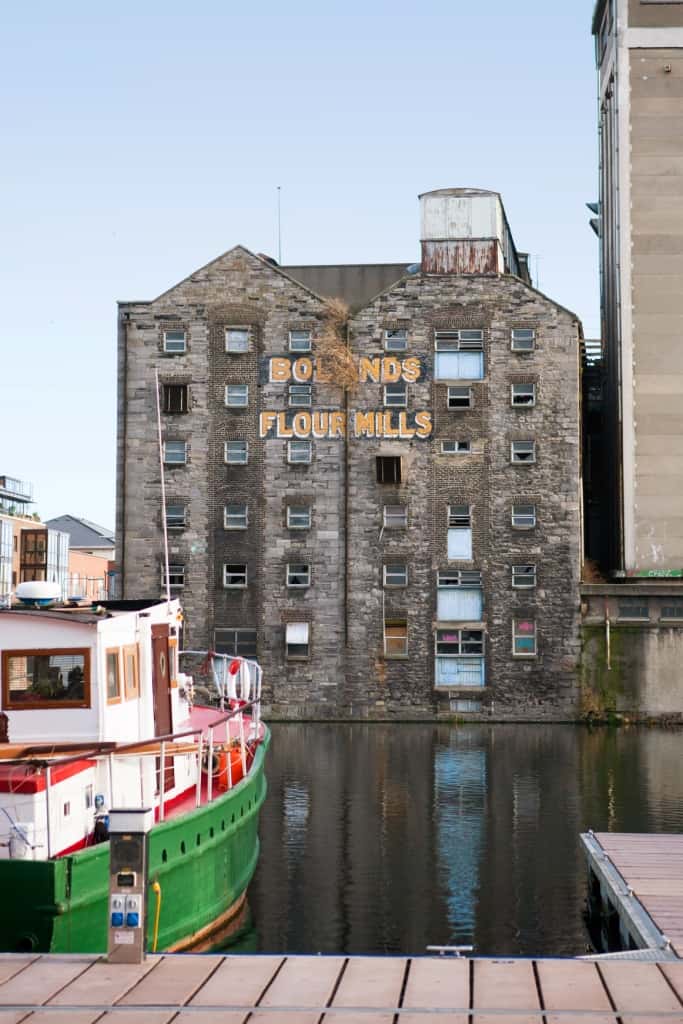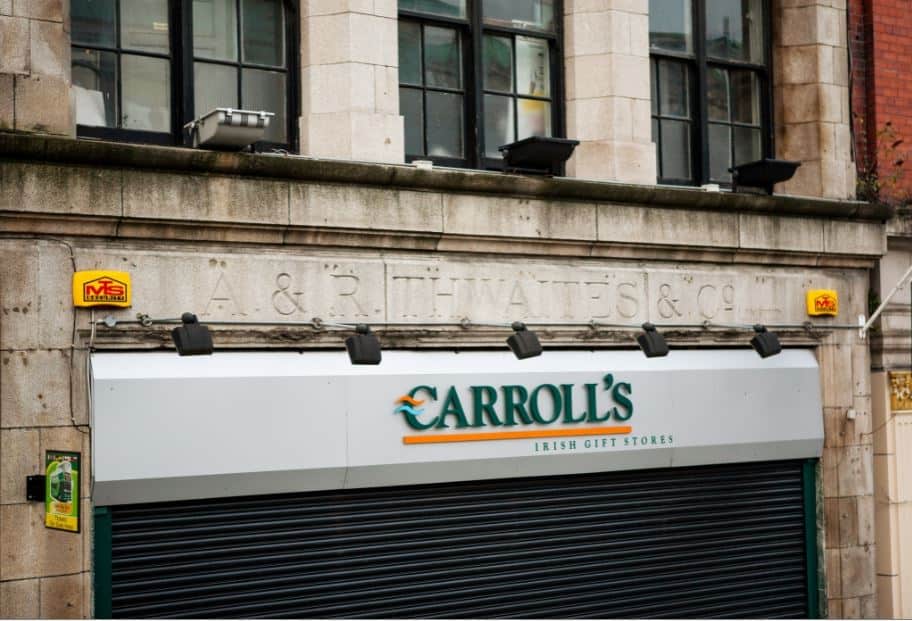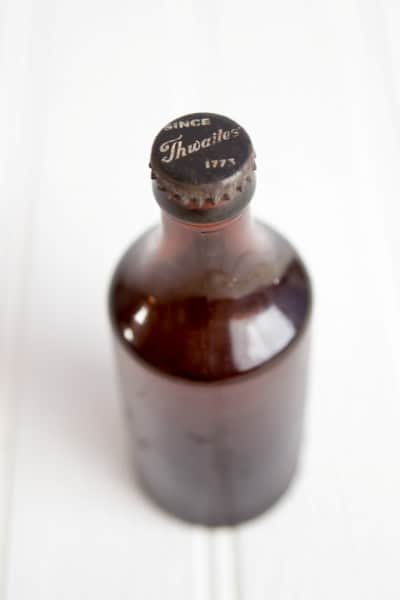16 Nov 2015
Ghost Signs of Dublin by Antonia Hart
Last year saw the publication of Ghost Signs of Dublin, to my knowledge the first book covering the subject in Ireland. It is the latest in the growing set of titles from The History Press, previously focused on the UK and USA. (See: Birmingham Alabama; Liverpool; New York; Phildelphia; St. Louis).
Versus other titles in the series, this book adopts a slightly different approach, providing more in-depth research on a smaller number of signs, rather than attempting anything like comprehensive coverage of the material available in the city. It also features a healthy dose of contextual material, including archival photography, contemporary press advertising and packaging and labels of some of the products advertised.
I caught up with author Antonia Hart, and photographer Lynn Nalty, the team behind the project, to find out a bit more about the book and how it came about.
SR: Tell me about yourself and how you got interested in ghostsigns.
AH: I was trying to write quite a different book some years ago, a novel set in Dublin before WWII broke out. I was trying to map out the streetscape for one of my characters, and to do that I walked around the city taking pictures only of what she, my character, would have seen in her time. So I was doing a kind of visual editing out of anything that had arrived after the forties. As I reviewed the pictures, they naturally clustered into groups e.g. iron railings, postboxes, lamps etc. One key set was commercial signs, and from this I developed the habit of spotting and recording ghost signs.
SR: Why did you decide to write a book on the topic?
AH: I began to notice how quickly things changed – you’d walk past a sign and realise another letter had dropped off, or maybe – much more rarely – that a sign had been cleaned or preserved in some way. In some cases a sign would disappear completely and I wondered what other traces were left of the person who’d caused that sign to be put up in the first place. I’d wanted to write a book about Dublin for ages, and the ghost signs (and the huge amount of civic history to which they were a gateway) gradually emerged as the prism I used to do so.
SR: Tell me a bit about the selection process for the material in the book. It differs from other History Press titles in the USA and UK in focusing on a smaller number of signs.
AH: I wanted the book to read like a history of the city, rather than as a collection of entries or a catalogue of ghost signs. In that way, the book diverges from, say, many of the online collections, because the images have been curated in a slightly different way. So, for example, I chose only signs which related to Irish businesses, even though there are quite a few which belonged to British or international companies. I had to think hard about which signs to leave out. There were a few signs which were lovely – the Baxendale sign over PantiBar in Capel Street, for example, has the most gorgeous lettering – but my research didn’t reveal much of general interest about the company so it was with some regret that I left that one out.
We wanted the book to be not just a historical portrait, but a visual portrait of Dublin, too, so there are several photographs of each sign, and, scrapbook-style, we’ve incorporated some old photographs and old advertisements for the businesses. Some of the signs had gone before the book even came back from the printers, and that, of course, is the nature of cities and of signage, that they change. The book doesn’t argue for that process of change to be halted, but it made an incision in time capturing the signs and the city. Not that that was particularly easy! Dublin is so full of massive trucks and buses and cranes that we had to schedule most of our shoots for Sundays, crack of dawn, when the city is at its stillest and emptiest.
SR: What are you thoughts on classifying signs as ghostsigns? You have included forms that others might not recognise as ‘ghost signs’.
AH: When I was spotting the signs, and then writing the book, I was interested in signs which were traces of a business at a particular premises. One of the ideas I was interested in exploring was how people used to be prepared to commit themselves to a business, a street and a city, by literally carving their name in stone.
The ghost quality in the signs I’ve used lies in the fact that the businesses they represented have closed down or moved away. I didn’t use advertising signs because I wanted signs which related to the specific buildings and streets which held them. Though of course those lovely old, peeling, painted advertisements – which are more usually what people would expect to be covered by the term ‘ghost signs’ – also tell fascinating stories about what people ate and put in their pipes and where they got their hair cut and so on.
Businesses used many different kinds of signage, and so I have included some more unusual ones, like threshold mosaics and stained glass, as well as non-verbal ones like a plaster figure, and in one case even an empty ledge. So I suppose you might say I’m not a purist! But I hope you’ll also see why I’ve done things the way I have for this particular book.
SR: How did the partnership with Lynn Nalty come about?
AH: Lynn and I have known each other since we were about eleven and, over the years, we’ve collaborated on other projects. She’s an experienced and talented photographer. The demarcation of work for me as the writer and Lynn as the photographer was very clear, and that helps. She didn’t get involved in choosing the signs and, once they were chosen, the photography and treatment of them was completely her patch.
SR: What’s your favourite anecdote/story from the book?
AH: Thwaites, the soft drink company, such a simple sign, but the earliest of mine. Thwaites junior claimed the invention of soda water, though I think several other people claimed it at about the same time. And there’s what I think is a great story in the book about a carter who worked for Thwaites. His brother-in-law, moving home from Scotland to join the Volunteer movement, was smuggling explosives home, stuffed into his mattress and sofa. The furniture was dumped on the quayside when he disembarked at Dublin, and he got in touch with his Thwaites connection. The carter had the keys to the Thwaites stables where the delivery vans and horses were kept. He borrowed and harnessed a horse and dray and he and his brother-in-law drove out to the house of Countess Marcievicz, one of the rebel leaders, in Rathmines. The delivery was made, but they later remarked that they hadn’t a clue what they were doing, and given that they had roughly bundled detonators, fuses and gelignite in haphazardly together, they were lucky not have have had an accidental explosion. Presumably the Thwaites horse was back to delivering soda water and ginger beer by morning.
SR: What plans do you have for the future, in the context of your work on ghostsigns?
AH: I’m about to start a PhD in History at Trinity College, Dublin, which is going to involve more research into businesses, so I’ll get stuck into that and we’ll see what falls out of it. The book came out in November of 2014 and I’d like to think it’s helped to get people looking around them. Images of ghost signs – or fading ads – have been archived in the US at least since the 1980s, and I know you’ve been working on this blog for about ten years, but in Ireland the interest is much more recent than that. There’s a great blogger collecting Dublin images, and there are people doing the same in Belfast and Cork. The ghost signs community online is collaborative and supportive and that’s such a nice environment to operate in.
SR: Where can people get the book?
AH: All the main bookshops, and if you want to get it online try Dubray Books or Kenny’s (free shipping worldwide) or of course there’s the old reliable, Amazon. [Also try abebooks, here in the UK, and here in the USA.]
Thank you to Antonia for taking the time out to talk to me. Here are a handful of other useful links connected to ghostsigns in Ireland that you may find useful:
- Antonia Hart’s blog with many additional images
- Ghost Signs of Dublin on Facebook
- A Gentleman of Letters, archival collection of the work of the late signwriter, Kevin Freeney
- Dublin’s Vanishing Craftsmen, a book with a chapter on the city’s signwriters (also available on abebooks, UK and USA)

